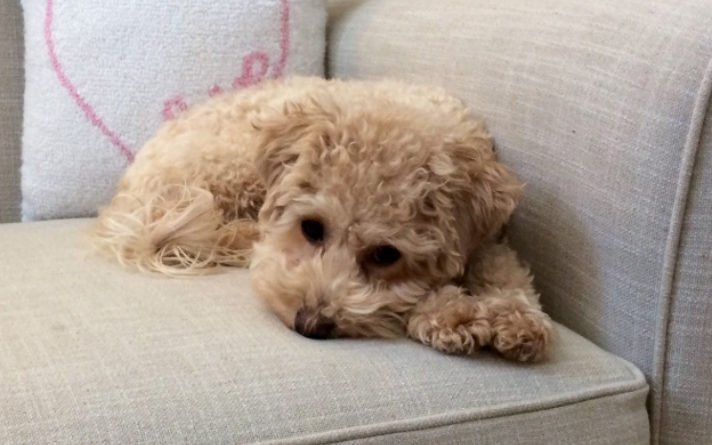Poochon Dog Breed Temperament Training Diet
1. What is a Poochon?
Also known as the Bichpoo, the Poochon is a hybrid of the Bichon Frise and the Miniature Poodle. Small and sturdy, it is smart and devoted to its owner. This quality makes it highly trainable.
If you want a companion for your existing pets, get this one. It’s pet-friendly and lives harmoniously with other animals. Note that it barks quite a bit, so you will need to rein in this behavior.
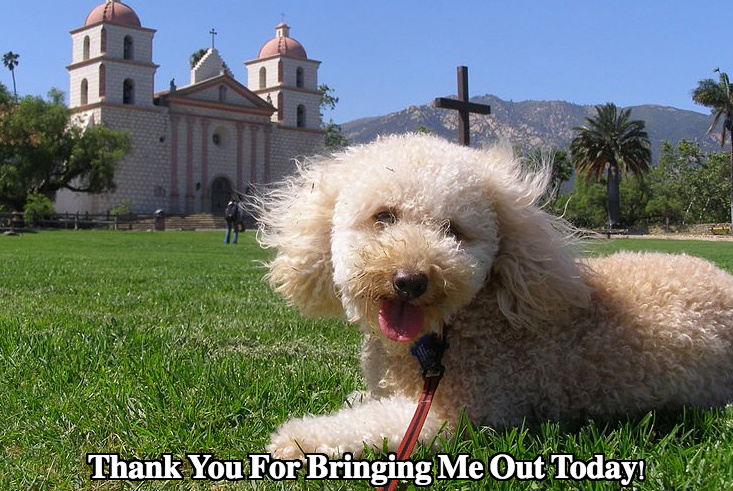
2. The History of the Poochon
Because it is a new breed, the Poochon’s history is limited. However, we do know many details about its parents’ origins.
a. Poochon History
Poochons first manifested in Australia in the late 1990s. Breeders wanted to produce a pet suitable for people who were allergic to dander. They also wanted to breed a loving dog that behaved well around children. The result was a cross between a Bichon Frise and a Miniature Poodle. These dogs have found their way into the hearts of many enthusiastic pet owners.
b. The Bichon Frise
Experts regard the Poochon’s first parent, the Bichon Frise, as a French dog. Although Bichon dogs are typically Spanish, the French nurtured them as lap dogs. They were Poodle-type dogs descended from Barbets and Water Spaniels.
Spanish sailors favored their happy dispositions and used them as barter. They introduced the dog to the Tenerife in the Canary Islands. Italian sailors discovered them in the 14th century and took them back to Europe, where they became the favorites of royalty. They had lion-style coats, much like Portuguese Water Dogs.
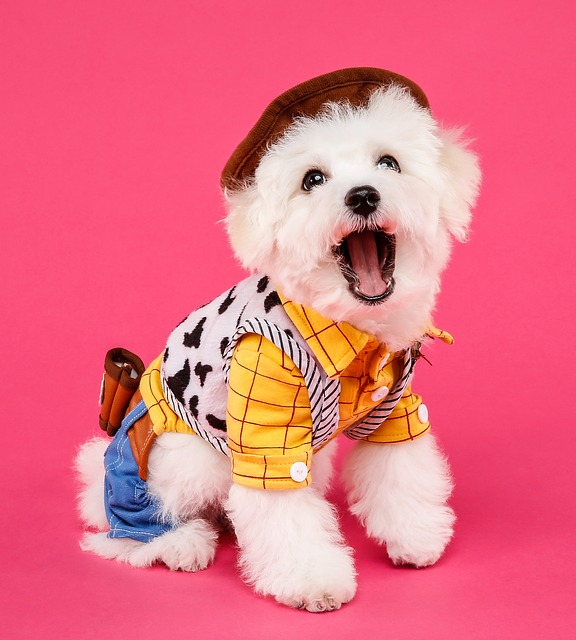
These dogs were well-received in France during the reign of Francis 1(1515-1547).
People were even more enthusiastic about them during the reign of Henry III. Francisco De Goya captured one of these dogs in his work. Napoleon III renewed interest in the breed during his reign.
The Bichon Frise became a common breed running the streets in the late 19th century. It accompanied organ grinders and led the blind. The Bichon also performed at circus shows and fairs.
The Societe Centrale Canine, the French national kennel club, crafted the breed standard for this dog. The institution adopted the dog The Federation Cynologique Internationale came up with the name Bichon Frise, which meant ‘curly lap dog.’
The Bichon came to the United States in 1955. Breeders whelped the first litter in 1956. The breed developed further when two breeders acquired Bichons in 1959 and 1960.
The Bichon entered the AKC’s Miscellaneous Class in 1971. The club admitted the dog into their studbook the following year. A Bichon won the Westminister Kennel Club dog show in 2001 and was the AKC’s 40th most popular breed in 2013.
Australians welcomed the Bichon in 1976. The first dog was Am Ch Beaumonde. Another was Snowdrift Leander, imported by Harry and Margaret Begg. Diane Crosby-Brown bred the first registered litter in 1977.
c. Poodle History
The Poodle, the Poochon’s other parent, also has a fascinating history. This intelligent, typically well-groomed dog has traveled far and wide.
This dog has debatable origins. The United Kingdom Kennel Club States that the breed originated in Germany, a statement that the American Kennel Club concurs. The Poodle indeed started as a duck hunter in Germany. Both the Oxford English Dictionary and the American Heritage Dictionary state that the word Poodle originates from the French Pudel, which means to ’splash around.’
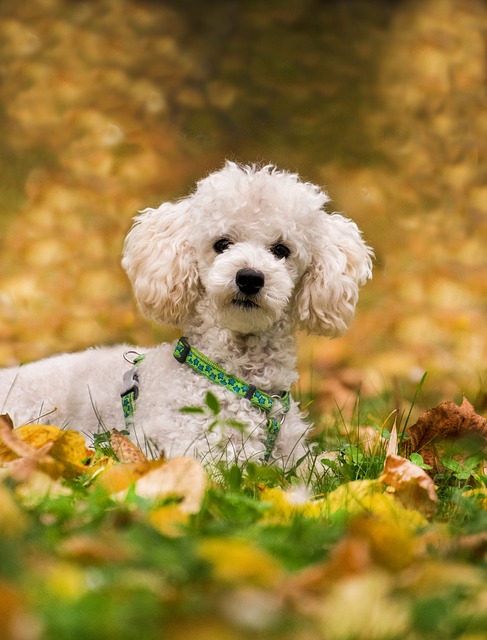
Breeders have developed the Poodle in three sizes, including the standard, miniature, and toy. The American Kennel Club, which recognized the breed in 1887, states that the Standard Poodle is the oldest of the three varieties. Because of their appeal to Victorian and Georgian women, they became a dog of the European upper and middle classes.
The British Kennel Club acknowledges the three sizes as well. The Federation Cynologique Internationale recognizes four dimensions – the toy, miniature, medium, and toy. Their coats come in many colors.
The toy variety came into being in the 18th century. Hunters tended to use the Standard Poodle for hunting. Miniature Poodles were well-regarded truffle hunters, valued because they could retrieve truffle without damaging them. Poodles were adept circus performers. Canadians and Americans have used them for fowl hunting since the 1990s.
3. Choosing a Poochon Puppy for your kids
A puppy is an addition to the family and will change your life forever. It’s essential to get a Poochon that fits your lifestyle perfectly. Here are a few tips that will help you make the right choice.
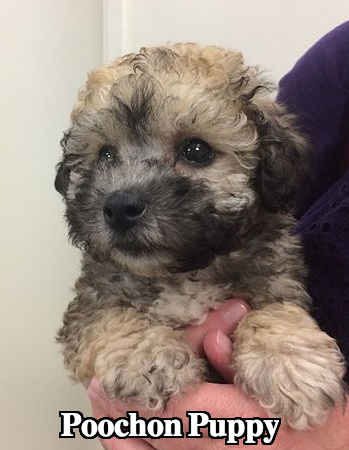
a. Think about your lifestyle.
First, think about your loved ones’ lifestyle needs. Are they sedentary? Is a family member hypoallergenic?
It’s wise to seek the advice of someone who has experience raising dogs. They may offer sound advice about what type of dog will suit you. Online questionnaires assess your lifestyle needs and will help you decide if the Poochon is for you.
The Poochon is a lapdog, but won’t suit you if you or your family members don’t have time to bring it out for walks. If you are looking for a pet that doesn’t shed, it’s the right dog for you.
b. Consider if a crossbreed is right for you.
The veterinary expenses required for looking after purebreds are high because they are prone to hereditary diseases. Crossbreeds like the Poochon, conversely, have fewer health issues and don’t need so many trips to the vet.
c. Is the dog Kennel Club registered?
If this detail is important to you, don’t bring a Poochon home. Kennel clubs haven’t recognized this dog as yet, so you won’t receive official registration papers.
d. Do I want a rescue dog?
Many rescue dogs turn out to be excellent pets. That said, many have experienced neglect or abuse. The mistreatment triggers psychological and physiological issues. A rescued Poochon may not be the best fit for a family with children.
e. Meet the parents
A puppy meet-the-parents session is essential. Examine a prospective Poochon’s parents to ascertain that they are free from health or behavioral issues. Puppies may inherit these.
f. Choose a Poochon with an even temper
Your breeder should have exposed the Poochon to many social interactions. A well-socialized dog is seldom ill-behaved. It’s usually calm, gentle, and sweet-natured. Note that a Poochon can be active, owing to its Bichon Frise heritage, and may not be suitable for a family with small children.
g. Meet the puppies
Take the vital step of meeting the litter of puppies that interests you. Assess the puppies’ personalities. Those that are dominant will scramble for their mothers’ milk, while the submissive ones will be the last to feed. Choose a Poochon that complements the personalities of your family members.
h. Make sure that the puppy has its vaccination papers
Your vet should have completed the vaccinations for your pet. He would examine it for heart murmurs, dental problems, or hernias.
A vet will also bring you through a checklist of health problems that need addressing. He will offer advice on nutrition, parasite control, and grooming.
i. Focus on early socialization
Socialization has an enormous impact on a puppy’s behavior. Well-socialized pets will not become fearful or aggressive. Calm interactions will offer it a pleasant view of the world.
Your aim should be to get your pet used to its surroundings. Introduce it to as many people and pets as possible. Bring it to a local dog trainer for training classes. A well-trained pet is always beneficial for your kids.
j. Get Pet Insurance
The financial cost of accidents and veterinary visits is high. Pet insurance will ensure that you can focus on giving your pet the best care possible.
4. House Training A Poochon
Potty training a dog can be stressful and intimidate a novice owner. Fortunately, house training a Poochon isn’t much trouble. We have a few tips to ease the process.
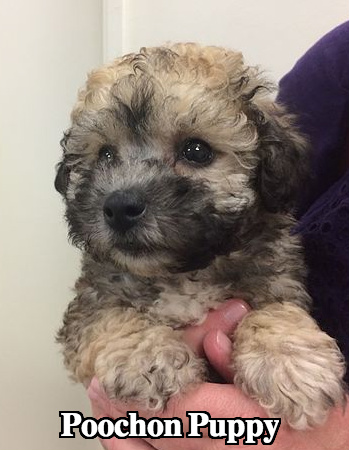
a. Setting routines
First, establish a routine for your puppy. Keeping schedules will help it form associations with ‘Potty Time.’ Dogs typically have to relieve themselves when they get up, after they eat, and before they sleep at night. Take it outside during these times.
Whether you train your pet indoors or outdoors, bring it to the same spot to relieve itself. Your pet will understand that the area is its bathroom.
b. Crate Training
Crate training can scare owners because it seems like imprisonment. However, you will be thankful for this tool when taking your pet on road trips or vet visits.
The key to successful crate training is not to let your pet associate the crate with punishment. Let it be a haven instead. To coax your Poochon to use it, put a treat in it and leave the door open. Your dog will go in on its own.
The crate should be of a comfortable size. Your dog will find an area in it to relieve itself if it’s too big. If it’s too small, your pet may not be able to stand, turn around, or lie down.
Take your Poochon out during appointed times and let it ease itself in a space in your garden. Keep your pet in its crate when you can’t supervise it because it won’t soil its den; dogs are clean creatures and have a natural aversion to dirtying their rest areas.
c. Paper Training
You will need to train your pet with either potty pads or newspapers if you live in an apartment. There may not be enough yard space for your pet to roam and ease itself.
To train your Poochon to relieve itself on newspaper or potty pads, put the pad or paper in the area where you want it to go. Leave your pet there.
If you use paper, remove some of it and shrink the size of the area. Your pet will understand that the restricted space is its toilet.
d. Outdoor training
Remember to clear up after your pet if you want it to relieve itself outdoors. Always bring it to the same spaces where you want it to ‘go potty.’ Your pet will associate the designated outdoor area as its toilet.
e. Bells
Bells remind your pet that its potty time. You can hang one over your dog’s crate or dog door if you have one. Carry your pet and train it to knock on the bell when it’s time to ‘go potty.’ Your pet will soon know that the sound means potty time.
f. Potty Training Dos and Don’ts
Do
i. let your pet ease itself in the same area
ii Use reward and reinforcement
Don’t
i. Punish your pet by rubbing its nose in its poo. Doing this will only cause it to fear you.
5. Poochon Appearance
The Poochon is a relatively new breed, so its appearance must spark a bit of curiosity. So, how does it look?
Like all hybrids, its appearance varies depending on which parent it takes after. To some dog owners, it resembles another Poodle crossbreed, the Groodle, but on a smaller scale. If breeders cross a Bichon with a Miniature Poodle, the puppies will be larger than other Poochons.
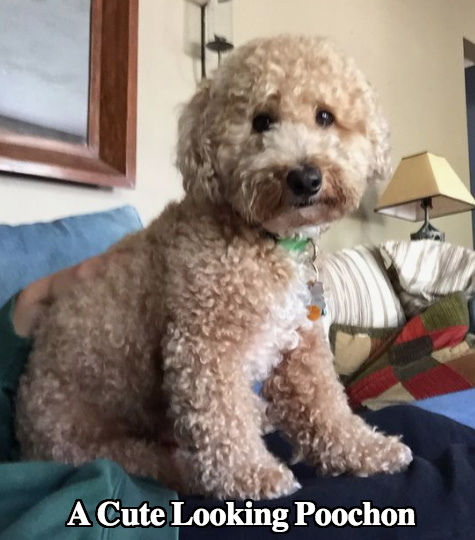
A Bichon bred with a Toy Poodle will stand between 25 to 28 cm and weigh between 4 -6 kg. It is a companion dog like its parents. It is sturdy, despite being small.
The Poochon is resilient and well-proportioned. It has a charming, intelligent expression and a round head like both its parents’. Because of its Bichon heritage, it has a much rounder face than the Poodle.
Since the Poochon’s parents are similar in appearance, Poochons tend to look more like each other than other hybrids.
A Poochon has a wool coat that may be wavy or curly. Most Poochons are white, given the color of their Bichon parents. They could also be blue, cream, apricot, red or grey. Their coats could be solid or particolored (two-colored).
6. Poochon Grooming
The Poochon has a Poodle parent, which means that it is fun, yet a challenge to groom. You’ll need to know some grooming basics before learning to create haircuts that will suit this dog.
a. The Basics
i. Brushing
The Poochon has a wiry, soft coat. It requires regular brushing with a Slicker or Bristle brush, depending on how curly it is. Use a bristle brush if it has a wiry coat and a slicker if it’s wavy.
Use a detangler if your Poochon has mats. The more often you brush your dog, the fewer of these you will come across. If there are too many of them, snip them off.
ii. Clipping
Clipping prevents knot buildup and keeps your dog’s coat tangle-free. A short coat will require less maintenance than a long one. Clip your Poochon’s hair until you reach a manageable length.
iii. Bathing
Poochons are hypoallergenic and require bathing about once a month. Of course, you should do so more often if your dog lives in the yard or goes outdoors frequently.
Put cotton balls in its ears to prevent water from seeping into them. Seepage tends to happen because a dog’s ear canal is longer than a human’s. Use a wash for dogs, and remember to take the cotton swabs out of its ears once done.
iv. Ear Cleaning
You will need an ear solution for dogs. Fold your pet’s ears back and clean the outsides with cotton swabs. Then, move to the ear canal. Clean it with the ear solution.
Ease your pet into the ear cleaning process. Don’t attempt to finish cleaning at one go, and use positive reinforcement.
v. Nail Clipping
This process can be a challenging one because a dog’s nails are more difficult to cut than a human’s. Furthermore, dogs can be afraid of blades and shun them.
Ease it into the process gently. Begin by rubbing its paws so that it gets used to being handled. Then, cut off a bit of the nail each time you massage them. Avoid cutting into the quick as this would be painful and cause profuse bleeding.
vi. Steps to grooming a Poochon
Place the dog on a non -slip bench. Use a conditioner to prevent static buildup on your pet’s coat.
Brush through the dog’s coat gently. Brush all the way down to the skin. Poochons with wavy hair may have tangles that you may miss.
Work from its head to its tail, cutting in the directing the hair grows. Use electric clippers to hasten the job. Use a warm cloth to wipe away as much of the hair as you can.
7. The Poochon Temperament
Like the Bichon and the Poodle, the Poochon is affectionate and loyal to its family, or pack members. It is a true lapdog companion.
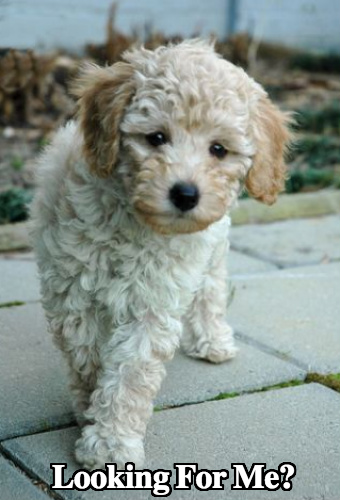
It is sensitive and doesn’t do well in tense situations. It also tends to nip when frightened or excited. Read the section on controlling annoying behaviors, which details how to prevent nipping.
The Poochon can’t spend too much time away from its family. It’s not the right dog for you if you spend long hours at work. It may become destructive in these situations. Again, read the section on controlling annoying behaviors for ways to deal with separation anxiety.
8. Poochon Health Problems
The Poochon is a resilient breed and has fewer health problems than its pedigree parents. That said, it may still suffer from genetic illnesses. These are a few that it may experience.
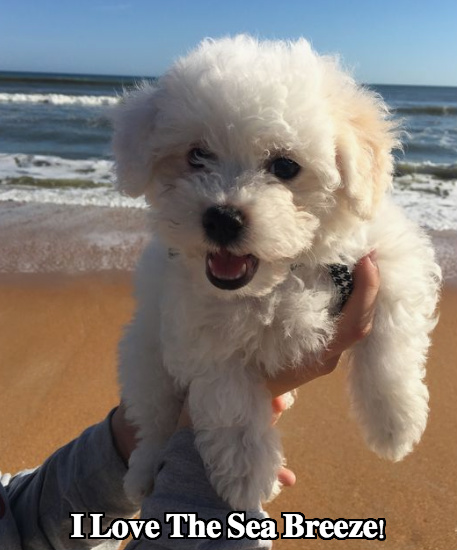
a. Addison’s Disease
The first health concern on this list is Addison’s Disease, a hormonal disorder caused by inefficient hormones in the adrenal gland(the two small glands located near the dog’s kidneys). Their deficiency results in the slow production of the other adrenal gland hormones like cortisol and aldosterone.
A dog may suffer from primary or secondary Addison’s disease. Primary Addison’s is the most common and occurs when the dog’s immune system destroys the adrenal gland. Causes of it are medications, cancer, poisons or concurrent diseases.
Your dog may develop secondary Addison’s if it has tumors blocking hormonal regulators in the brain (i.e., a tumor in the pituitary gland). The condition may also occur if your dog is taking long-term steroid medication.
A dog suffering from the disease may experience:
- • tiredness
- • depression
- • nausea
- • dehydration
- • excessive thirst
- • diarrhea
- • quivering
- • slow heart rate
Your vet will conduct tests to ascertain your pet’s kidney, pancreatic, and liver functions. He may also perform an ECG to screen for arrhythmia (abnormal heart rhythms), and urine tests to detect urinary tract infections. An ACTH-simulation test will tell him if there is sufficient cortisol in the blood.
Your vet may prescribe cortisol to help your pet cope with stressful situations. He will also see your dog on a regular basis to ensure that it’s adjusting to its medications.
b. Von Willebrand’s disease
Von Willebrand’s is a hereditary blood disorder caused by an insufficient amount of Von Willebrand factor, the protein used to make platelets (the blood cells that create clots to seal broken blood vessels). As a result, dogs which have this disease suffer profuse bleeding.
Dogs with this deficiency may not show evidence of it. However, some may hemorrhage from the nose, urinary tract, and vagina. Furthermore, they may experience profuse bleeding after surgery. Females may also bleed excessively after giving birth.
Some medications, such as Aspirin, Antibiotics Penicillin, Tranquillizers, Heparin, and Theophylline may trigger the disease. Your vet will perform a blood transfusion in the event of an emergency. He may also treat the dog with a drug named DDVAP to improve the Von Willebrand factor.
c. Cushing’s Disease
Both humans and dogs can suffer from this ailment. Cushing’s occurs because the dog’s endocrine system ( a collection of hormonal glands) secretes too much cortisol. Overproduction of cortisol may happen if a dog takes too many cortisol medications.
A dog with Cushing’s disease may experience insatiable hunger and thirst. It may pant excessively and have a pot belly. Other symptoms are:
- • obesity
- • fatigue
- • hair loss
- • infertility
- • darkening skin
- • blackheads
- • thin skin
- • bruising
- • white patches on the skin
- • recurring infections
- • high blood pressure
A benign tumor is typically the cause of this illness.These tumors may metastasize throughout the body and cause an overproduction of cortisol. Excessive administration of cortisol medication can exacerbate the condition.
Your vet may remove excess cortisol medication and monitor your pet if it has Pituitary-dependent Cushing’s disease. He may also prescribe trilostane or mitotane.
d. Patella Luxation
This condition occurs when a dog’s kneecap becomes dislocated. The dog cannot hold up its hind legs. It is common in toy breeds like the Bichon, so it’s not surprising that a Poochon may suffer from this malady.
9. Poochon Nutrition
Dogs need a healthy, consistent diet, just as humans do. If you are a first-time dog owner, however, dog food can be puzzling. Here’s some advice.
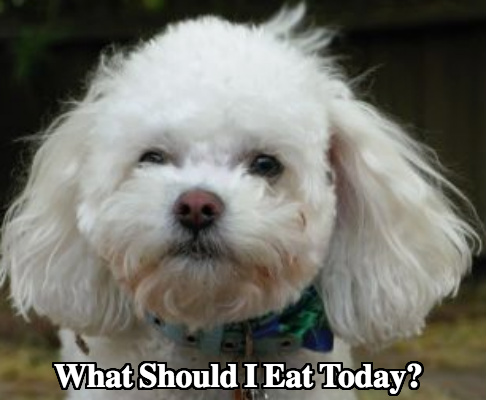
a. Nutritional Requirements
All dogs, regardless of breed, need high-quality protein, fats, and vegetables. They need calcium, vitamins, and other minerals as well. Your Poochon may not be getting the nutrition it needs if it has constant allergies, skin irritation or an upset stomach.
b. Commercial Dog Food
Manufactured canned or dry dog food is easy to store. All brands claim to offer the perfect balance of nutrition, but not all are equal.
Avoid foods containing corn or soy as your Poochon is a carnivore that needs meat. Canned food may motivate your pet to eat if it’s a picky eater. It usually contains a higher percentage of protein than dry food. It is also a rich source of complex carbs. A Poochon may benefit from the extra energy since it’s active.
c. Homemade food
Homemade food is the healthiest option for your Poochon. Preparing your pet’s meals yourself will allow you to eliminate harmful preservatives. But what can you feed your Poochon?
Your dog can eat cooked chicken or other meats, brown rice, and vegetables. If you wish to put your pet on a raw food diet, feed it skinless chicken or bone meal.
Peanut butter is one of the best treats to give your Poochon because it will last a long time. Make sure that it doesn’t contain harmful sugars or sugar substitutes.
You can feed your Poochon cheese or other dairy products if it isn’t lactose intolerant. Cottage cheese is the best choice for dogs because it contains calcium and is easy to digest.
Carrots make crunchy treats. Besides, they contain vitamin A and fiber. They are also beneficial for your pet’s teeth. Pet owners favor it because of its low-calorie content.
Yogurt is another healthy dog treat because it contains active cultures that aid digestion. It is suitable for dogs which have weak stomachs. Choose yogurt that doesn’t have sweeteners.
Pumpkin without added sugars is an excellent choice for dogs because it is fibrous and aids digestion. It’s also a rich source of vitamin A.
Your pet can eat raw or cooked eggs. If you wish to feed uncooked eggs, keep their shells. Eggs provide biotin, riboflavin, protein, and selenium.
Is your Poochon tubby? Feed it green beans. Vets recommend it for pets struggling with obesity. These are high in fiber and have few calories, so they make healthy treats.
Salmon has the Omega-3 acids that your Poochon needs. If raw salmon is too expensive, you can give your pet Omega-3 supplements. Never feed your dog uncooked salmon.
Sweet potatoes are another rich source of fiber, Vitamin A, and other nutrients. They are easily digestible but do remember to cook them.
Apples are healthy and contain loads of phytonutrients and vitamins. However, don’t feed apple cores to your pet as the seeds contain cyanide.
Oatmeal is a healthy addition to a dog’s meal. It is an excellent source of fiber and has the vitamins your pet needs.
10. Frequently Asked Questions About Poochon Breeding
Breeding a dog is challenging, and producing a crossbreed like the Poochon is an art. It also requires immense patience. Here’s what to consider if you intend to breed yours.
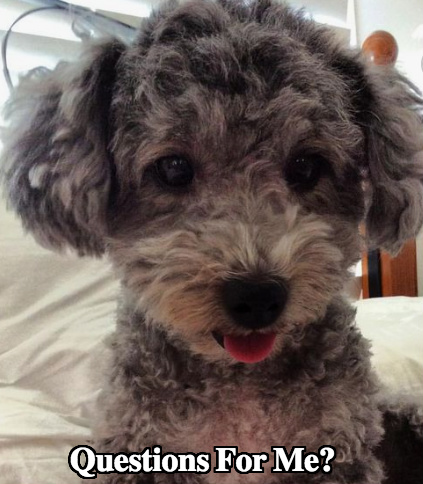
a. How do I choose the right breeder?
Choose a responsible breeder if you intend to enlist help. A reliable breeder will breed his female in hygienic, spacious conditions. He will also ensure that his puppies receive their vaccinations.
A dependable breeder will allow you to meet his puppies and their parents. You should be able to assess them for genetic health and behavioral conditions.
Furthermore, a breeder should never breed puppies merely to sell them. He will ascertain how ready you are to accept a Poochon into your family and will require you to return an adopted puppy should you decide that you cannot keep it.
b. How should I advertise that I have puppies available?
Put out advertisements in local newspapers or set up a website that informs people that you have puppies available. Furthermore, ensure that these puppies will have homes. Doing so will prevent culling at animal shelters.
c. When is my female ready to breed?
Have your vet screen your female. He should test it for genetic diseases and joint issues.
Watch your female and make sure that it’s ready to breed. It will stop ‘spotting’ around the home and will allow a male to mount her. Some vets will recommend that you do a progesterone test to ensure that it’s ready to breed. He will take a blood sample every few days to determine when her progesterone is at its peak.
d. How often should you breed your female?
A male’s sperm will remain in the female for about a week. If the stud mounts the dam as soon as it can stand and again every two to three days, fertilization will be complete. The female will continue to have healthy sperm.
A female that refuses breeding may not be in heat. Alternatively, it may not feel attracted to the male. If such is the case, it may need a little help.
Seek the help of the breeder at this point. He or she will show you how to restrain your dam. Be careful as it might be dangerous for both you and the dogs concerned.
e. What should I do during the breeding process?
Stay with the female at all times. Have whelping supplies ready. You may have to support the dam so that the weight of the male doesn’t crush it. The good news is that this isn’t a common problem with Poochons as the Poodle and Bichon are about the same size.
The male’s bulbous glands will swell when it mounts the female. It will tie to the dam for about twenty minutes. The time varies between two minutes and half an hour. The male will typically swing a back leg over so that it can stand and connect with the female, tail to tail.
Don’t attempt to separate them. Keep the female from rolling over the male. Exercise patience as the process will end it due time.
f. What should I do after the breeding ends?
Walk the female. Don’t let it urinate for about twenty minutes.
g. What should I note about breeding
Breeding should never be only about money. After a genetic screening, x-rays, and vaccinations, you may make a loss. Only breed if you wish to grow the Poochon population and your female has something to contribute to its development.
11. Annoying Poochon Habits
No dog, or human, is perfect. Your Poochon may have habits that get on your nerves. Here are a few, and how to deal with them.
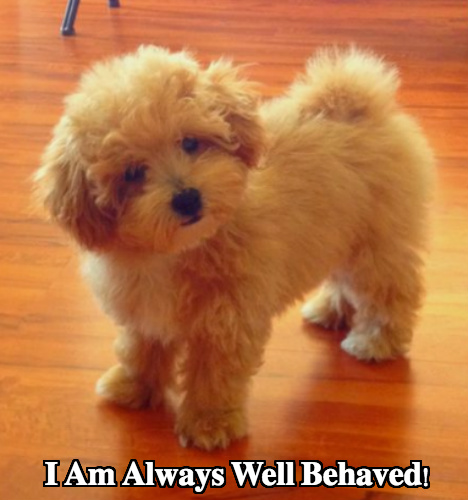
a. Barking
First on the list is barking. Dogs bark to get attention and to inform their owners of unusual occurrences. Note that you don’t want to stop the barking habit entirely because it’s useful; you do want to know if a stranger is around.
To get your Poochon to bark at the right times, teach the command ‘no speak.’ When your pet barks, close its muzzle gently and instruct it the same time. Your dog will soon realize that it should only bark when something strange is afoot.
b. Chasing
Your Poochon may have a penchant for passing cars. If it has the chasing habit, rein it in. It can be dangerous or fatal.
Your pet should know the ‘sit,’ ‘stay,’ and ‘come’ commands. Keep your pet leashed. Give these instructions as appropriate.
Once your pet sits, stays, or comes to you when there is a car, begin training outdoors. Issue these instructions as necessary.
c. Chewing
Does your Poochon prefer your slippers to its food? It’s time to get rid of the chewing habit.
Have chew toys ready. Each time you notice your pet biting into your slippers, replace them with a toy. Do this until your pet understands that shoes aren’t mouth rings.
d. Digging
No owner likes to return to a yard full of holes. To stop digging, fence your pet in an area where you won’t mind a bit of mess. Then, give it a sandbox where it can burrow. You will keep the untidiness to a minimum.
e. Begging
Are those doe eyes difficult to resist? It’s hard not to give in to your pet’s requests for food, particularly when it gives you a pleading look.
But ignore it you must. Never give attention to your pet when it begs because your pet will believe that the doe-eyed look gets it what it wants. Feed it when you eat. Doing so will lessen its need for human food.
f. Gulping
Fortunately, this isn’t a problem for Poochons because Poodles and Bichons tend to be genteel. That said, you do want to prevent your pet from eating too fast.
Use bowls that restrict the amount that a dog can eat at once. They will force your pet to slow down.
g. Nipping
Nipping is cute, but undesirable behavior that may lead to aggression. Yelp when your puppy mouths you. If it is concerned, it will stop to find out what has upset you. Give it a toy to nip on instead. Do this until your pet realizes that the behavior is unwanted.
h. Aggression
Dogs become aggressive to protect you or its territory. Remove the source of the aggression, or take your pet away from it. If it’s food, make sure that you feed your pet alone. If it’s the postman, take your pet away when he arrives.
Your pet may be uncomfortable around other dogs. Socialization is key. Expose your Poochon to as many dogs and people as possible so that it becomes less defensive. Make it a point to avoid potential conflicts.
i. Separation anxiety
This behavior indicates that there is a firm bond between you and your pet, but is disturbing nonetheless. To get your pet comfortable when you aren’t around, stay away from it for short periods of time to start. Gradually lengthen the time that you’re away from it.
Make it a point to say goodbye to your pet but don’t fuss. Your dog will soon understand that you aren’t away from it permanently. Play soft music when you aren’t around.
12. Obedience Training for Poochons
Every dog needs discipline. Besides, listening to instructions keeps it safe. Here are a few that your Poochon should master.
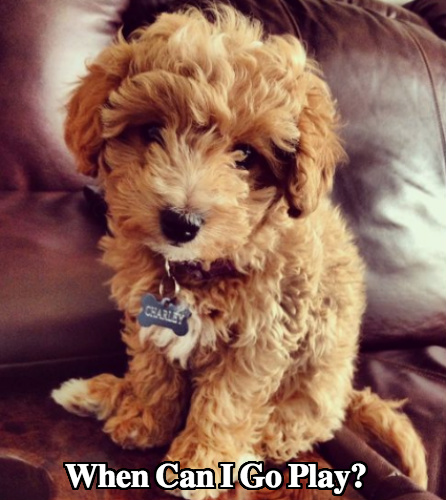
a. The basics
Bear a few things in mind before teaching your pet obedience.
First, consistency is the key to successful training. Be patient, and never punish your pet for doing so will only cause it to fear you. Teach in a quiet place where both of you can focus. Practice at home before issuing the commands in public.
Reward your pet for obeying instructions successfully. Most importantly, keep sessions short and fun.
b. Watch me
Before your pet can master other obedience commands, it should learn to watch you.
Keep eye contact with your pet and hold a treat in your hand. Move it upwards from your pet’s nose to your face. Your pet will follow the goodie and begin to watch you. Say ‘watch me’ when it does so, and give it the treat. Do this until your pet masters the command.
c. Sit
This command keeps an active Poochon still when necessary.
Hold a treat in front of your pet’s nose and move your hand up. It will follow the goodie and move naturally into a sitting position. When this happens, give it the treat and say ‘sit.’ Repeat this until your pet is familiar with the command.
d. Down
This command is challenging for a pet to master as it involves submission. However, a goodie usually does the trick.
Hold it in your hand and close to your Poochon’s face. Move it down to the ground so that your pet follows. Provoke it to move into a lying position. When this happens, give the ‘down’ command and hand it the treat. Repeat this until your pet understands the command.
e. Stay
This command also keeps your pet in place when necessary. Your pet must first know how to sit.
Get your dog to sit and wave a treat in front of its nose. Give the command ‘stay’ and move a few steps back.
Hold a treat in a closed fist and move a few steps away. Reward your pet if it stays and doesn’t follow you. If it does, say ‘no’ and step back again so that your dog will know when to move and when to stay in place. Repeat the exercise as necessary.
f. Come
This command is more teachable than the others.
Leash your pet and keep it at a specific distance from you. Ask it to come and tug on the leash gently. Offer a treat when the dog arrives. It will soon associate the goodie with the movement towards you.
g. Off
You don’t want your enthusiastic pet to jump on others and scare them. You can ignore jumping behavior, but its best to get your pet to learn how to leave objects when appropriate.
Put a treat in your closed hands and near your pet’s face. Your dog cannot get to the goodie and will back off eventually. At this point, say ‘off’ and open your hand. Repeat this exercise until your pet understands the instruction.
h. Heel
You don’t want to drag your pet because doing so will injure its paws. The solution to a wilful pet that refuses to move is the ‘heel’ command.
Hold your dog’s leash on your right while pulling it on your left. Get your pet to sit. Hold a treat in your left hand and give the instruction, ‘heel.’
Take a few steps and keep the treat with you. When you break, move the goodie upward and reward your pet. It will learn that it has been up to the task.
13. Games to Play with a Poocohon
Dogs need entertainment like humans, and a bored dog is a destructive one. Here are few games that will keep it occupied.
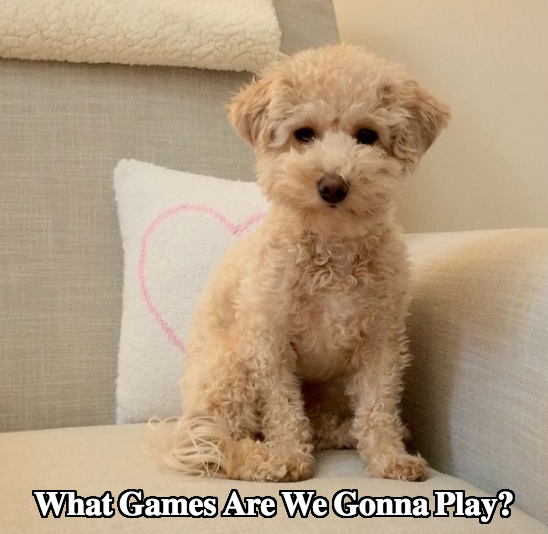
a. Tug of War
First on this list is Tug-of-war, which some pet owners resist playing because they fear that the game promotes aggression.
It won’t if played well. Tug of war is also an opportunity to teach your dog to leave objects when necessary.
Remember that the dog’s teeth mustn’t touch your skin. Stop the game as soon as this happens. Your pet will learn that the fun stops if it becomes aggressive.
b. Frisbee
Dogs have an instinct to chase, so this is a fun game to introduce.
Use a soft disc if it doesn’t know how to catch frisbees. Toss it over short distances or roll it along the ground. Increase the distance once your pet learns to go after it.
c. Hide and Seek
This game is a two-player activity. Get a family member to hold your Poochon in one area while you hide your pet’s favorite treats all over your living room. When you are ready, say ‘find’ and get your partner to release your pet. Watch as your pet gathers and gobbles up the treats.
d. Indoor Agility Course
Such an obstacle course is useful when you can’t take your pet outdoors. Use pails, chairs, and hoops for your pet to go under or jump over. Lead it through the course at first and let it go on its own when it becomes familiar.
e. Kong toys
Fill a challenging Kong toy with your pet’s favorite treats. Your pet will spend hours trying to figure out how to get the goodies out of the toy.
f. Bubbles
If you enjoyed playing with bubbles as a kid, your pet would too. Blow a few at a time and encourage your pet to chase them. Catch some to show your pet that they are nothing to fear. Your pet will soon get the hang of the game.
g. Water games
Dogs love the beach, particularly those that love swimming. Your Poochon would since it has a Poodle parent. Have a doggie life jacket on hand.
In all, the Poochon is the perfect lapdog and will make a welcome addition to the family if well-trained. With proper nutrition, grooming, and constant checks on its health, it will be an inseparable part of your life for years.
